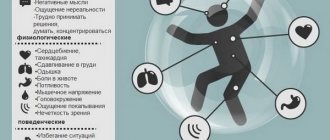Fainting, or syncope, is an attack of short-term loss of consciousness with disruption of muscle tone, activity of the cardiovascular and respiratory systems. Fainting is not a disease, but only a symptom of some condition of the body, and the cause is not always a disease. The main mechanism for the development of fainting is considered to be a sudden decrease in blood supply to the brain. Despite the many reasons leading to fainting, its clinical picture is quite the same (with minor features). In this article we will talk about how fainting manifests itself, the main types of fainting and their treatment.
Fainting is very common. Almost a third of the world's population has experienced syncope at least once in their lives. The prevalence of fainting increases with age, this is especially noticeable after 65 years (in this age category the frequency increases by 2 times). But children, on the contrary, very rarely suffer from such conditions.
Three main types of fainting
1. Reflex (neurotransmitter) fainting occurs due to a malfunction of the nervous system and, as a consequence, vasodilation and a decrease in heart rate (bradycardia). Systemic blood pressure drops, and as a result, blood supply to the brain is disrupted. There are two types of reflex fainting:
- Vasovagal (neurocardiogenic) syncope occurs when the autonomic nervous system, which regulates blood pressure and heart rate, is disrupted. This is the most common type of fainting; it occurs especially often in athletes, young and generally healthy people. Vasovagal syncope usually occurs in a person who is standing or sitting. In this case, there is often a pre-fainting state: dizziness, lightheadedness, flush of heat, pallor, nausea, vomiting, abdominal pain, increased sweating. There is usually no cause for concern with vasovagal syncope. Such fainting can occur after a strong cough, sneezing, laughing, fright, severe pain, at the sight of blood, as well as while being in a crowded place, a hot room, in the sun, after physical exertion, urination, defecation, etc.
- Sinocarotid syncope, which occurs when pressure is placed on the carotid sinus (the dilated part of the common carotid artery). This can, for example, occur when the neck moves (in particular when a man shaves and turns his head), or if the shirt collar is too tight.
2. Fainting due to orthostatic hypotension. Orthostatic hypotension is a decrease in blood pressure during a change in position from horizontal to vertical, that is, at the moment when a person stands up. It can occur for a variety of reasons:
- from dehydration (including due to diabetes mellitus);
- with Parkinson's disease;
- after taking antiarrhythmic or antihypertensive drugs (especially in older people in the heat), antiemetics, antidepressants and antipsychotics;
- from drug and alcohol abuse;
- due to internal bleeding as a result of violation of the integrity of internal organs after injury or due to complications of various diseases;
- after standing for a long time, especially in crowded, stuffy places.
3. Cardiogenic syncope is associated with cardiac dysfunction. It can occur even when a person is lying down. Usually there are no warning signs - the person suddenly loses consciousness. This type of fainting indicates a serious threat to life and health. It occurs more often in people with a family history of unexplained sudden death or early cardiovascular disease. Fainting can be caused by:
- arrhythmia;
- ischemia (lack of blood supply) due to severe narrowing of the coronary vessels, as well as a tumor or blood clot that impairs the patency of a large vessel;
- structural changes (cardiac tamponade, aortic dissection, congenital anomaly of the coronary arteries, hypertrophic cardiomyopathy, etc.).
Sometimes fainting can be associated with hypoglycemia (too low blood glucose levels) due to diabetes, panic or anxiety disorder, etc.
A non-convulsive epileptic attack can also look like fainting, but it lasts longer than a regular faint, and after it the person does not immediately come to his senses. Also, during an attack, the patient may bite his tongue, and sometimes fecal or urinary incontinence occurs.
Loss of consciousness in some cases is caused by serious neurological disorders: stroke, transient ischemic attack, subclavian steal syndrome (deterioration of blood supply due to narrowing or blocking of the lumen of the subclavian artery), severe migraine.
Loss of consciousness after a traumatic brain injury also cannot be called fainting; in this situation, you must consult a doctor so that he can assess the severity of the damage.
In rare cases, loss of consciousness can be caused by narcolepsy, a condition in which a person experiences daytime sleep attacks and cataplexy (sudden relaxation of muscles).
Presyncope
Usually a person does not lose consciousness suddenly. A few minutes before syncope, your health sharply worsens, and the first signs of hungry fainting occur:
- dizziness;
- cold sweat;
- nausea;
- fog;
- weakness;
- sensation of noise and ringing in the ears.
These symptoms indicate that the brain does not have enough oxygen, and soon the body will “turn off” the central nervous system. Then the person develops black spots and blurred vision, and the pupil stops responding to light. The skin turns pale and becomes covered in sweat. Approximately 20 seconds after visual disturbances, hungry fainting begins.
When should you see a doctor if you faint?
If you faint, this is not always a reason to see a doctor. For example, if nothing like this has happened before, if this is the first fainting spell in several years, then most likely you do not have any life-threatening diseases. However, there are “red flags” for the person and for those who witness the fainting, indicating that they need to seek medical help:
- fainting lasts more than 2 minutes;
- fainting occurs frequently;
- You fainted for the first time after 40 years;
- You were injured while fainting;
- you have diabetes;
- You are pregnant;
- you have had or have heart disease;
- before fainting you felt chest pain or strong or irregular heartbeat;
- during fainting, urinary or fecal incontinence occurred;
- if you start to feel short of breath.
Diagnostics
Pre-fainting conditions, especially those that recur regularly, require examination by a specialist. It is advisable for a person to contact a therapist, who will prescribe a set of laboratory and diagnostic tests and refer them to all the necessary specialists. Examination stages:
- Examination, questioning, collection of primary anamnesis.
- Laboratory diagnostics (general blood and urine analysis, biochemical studies), instrumental diagnostics (may include ECG, X-ray, CT or MRI as prescribed by a doctor).
- Adjusting the patient’s lifestyle and nutrition, taking vitamins.
- Visiting specialists (for example, endocrinologist, gynecologist and cardiologist).
In one-time cases, patients do not consult a doctor, but frequent repetitions are a sign that consultation with a specialist cannot be avoided. Depending on the diagnostic results, the specialist prescribes the necessary treatment. Self-medication can be dangerous. Conclusions can only be drawn by a medical professional.
What will the doctor do?
The doctor must understand what is the cause of fainting and whether there is a threat to life and health. To do this, he will ask about the episode itself, about the medical history, about the illnesses of relatives (especially about early heart problems), conduct an examination and do an electrocardiogram. It is very important to tell your doctor everything you felt before and after you fainted, as additional symptoms can be very helpful in making a diagnosis. For example, chest pain in some cases indicates acute coronary syndrome (myocardial infarction or unstable angina) or pulmonary embolism. Rapid heartbeat is often a sign of arrhythmia. Shortness of breath may be a manifestation of heart failure or pulmonary embolism. Headache in some cases indicates vascular disorders and hemorrhages.
Often, the patient, among other things, has a stool test for occult blood (this checks for bleeding in the gastrointestinal tract), a blood test to determine whether there is anemia, and a blood test for brain natriuretic peptide (this can indicate problems with heart). The woman will most likely be given a pregnancy test. The doctor can see how much your blood pressure and pulse change when you change your body position.
If the doctor believes that it is likely that carotid syncope has occurred, carotid sinus massage will be required to confirm the diagnosis.
If subarachnoid hemorrhage is suspected, a CT scan of the brain and a lumbar puncture may be needed.
If the doctor suspects that the problem is epilepsy, he will prescribe an electroencephalography.
If you suspect heart problems, your doctor may admit you for observation in the hospital, send you for an ECG and echocardiography, perform Holter monitoring (24-hour ECG recording), electrophysiological study of the heart, or coronary angiography. In difficult cases, an implantable (subcutaneous) loop ECG recorder may be installed for several months.
A high risk of severe consequences is indicated by:
- ECG abnormalities;
- structural changes in the heart;
- symptoms indicating heart failure (shortness of breath, weakness, fatigue, swelling, etc.);
- low blood pressure (systolic - “upper” - below 90 mm Hg);
- shortness of breath before or after fainting, or at the time of treatment;
- blood hematocrit is less than 30%;
- old age and the presence of concomitant diseases;
- sudden deaths in the family due to heart problems.
Complications
If you hit your head during a fall, you need to visit a traumatologist to make sure there is no traumatic brain injury. Fainting can be dangerous:
- cardiogenic due to the risk of arrhythmia, heart attack;
- received while playing sports;
- while driving a car;
- for injuries caused by a fall;
- in old age, any case requires diagnosis;
- deep fainting can lead to respiratory arrest and suffocation due to tongue retraction.
When diagnosing a condition, a medical specialist pays attention to the events that preceded it (medication overdose, stress, trauma). Next, the heart rate is assessed and blood pressure is measured. In this way, you can verify the absence of cardiac pathology or assume the presence of vegetative-vascular dystonia. A complete blood test provides information about the level of hemoglobin and the number of red blood cells. It is also necessary to donate blood for sugar.
Instrumental studies are prescribed if it is necessary to exclude diseases of the internal organs. These include radiography, ultrasound, electrocardiogram, MRI. Based on their results, consultation with specialized specialists may be necessary.
Treatment after fainting
Whether you need any treatment after fainting depends on the cause.
In case of reflex fainting, provoking factors should be avoided, since no treatment is required in this case. If you faint while your blood is being drawn, tell the nurse so they can have you lie down on the couch before pricking your finger or giving the injection. If you don't understand what exactly causes fainting, but your doctor says there is no threat to your health, you can keep a diary to determine the triggering factors.
In case of anemia, it is necessary to find out its cause and correct it: the range of conditions leading to anemia is very wide - from an unbalanced diet to a tumor.
If you have low blood pressure, it is recommended to avoid dehydration, not to eat large meals, and to drink caffeinated drinks. To prevent the pressure from dropping sharply, after you get up, you can resort to special maneuvers: cross your legs, tense the muscles in the lower part of your body, clench your fists or tense your arm muscles.
If fainting is caused by taking any medications, the doctor will stop or replace the culprit drug, change the dose or time of administration.
Some heart conditions will require surgery, including installation of a cardioverter-defibrillator (a device that monitors the heart's rhythm). In other cases, conservative therapy, for example, antiarrhythmic drugs, helps.
Symptoms
In a pre-fainting state, the appearance of corresponding symptoms is observed. Patients experience severe weakness and increased sweating. The pathological process is accompanied by dizziness and a feeling of heat. Patients complain of lack of air.
If a presyncope occurs against the background of vegetative-vascular dystonia, then additional symptoms may occur. Patients complain of fear and anxiety, despite the absence of a reason. Patients experience increased heart rate and dark vision. The disease leads to impaired motor function.
The occurrence of presyncope during pregnancy is accompanied by a sharp attack of nausea. Women complain of excessive weakness and dizziness. The disease is accompanied by increasing ringing in the ears. With pathology, arms and legs become numb.
If the pre-fainting state is short-lived, then this is not a pathological process . If you experience frequent loss of consciousness, it is recommended to seek help from a doctor to undergo an examination and determine the cause of the pathology. This will allow you to prescribe adequate therapy for presyncope.
First aid for fainting
When you feel that you are about to faint (pre-fainting or, for example, causeless yawning), lie down so that your legs are higher. Or sit with your head between your knees. This will allow more blood to flow into the brain. If you do lose consciousness, after you come to your senses, do not get up immediately. It's better to give yourself 10-15 minutes to recover.
If a person begins to lose consciousness before your eyes, follow the same instructions: lay him down so that his legs are higher than his head, or sit him down and lower his head between his knees. It is also better to unfasten the collar and loosen the belt. If a person does not come to consciousness for a long time (more than 2 minutes), lay him on his side, monitor his breathing and pulse and call an ambulance. It is not recommended to use ammonia: firstly, it is unclear whether it brings a person to consciousness faster, and secondly, it can be dangerous in some diseases, for example, bronchial asthma.
Consequences
The most common consequences of hungry fainting include injury from a fall. The head, arms or legs may be affected. The most dangerous is a concussion.
Frequent repetition of fainting conditions threatens with progressive arachnoiditis, when the arachnoid membrane of the brain becomes inflamed. Symptoms include severe pain in the head and various memory disorders.
If the necessary nutrients do not enter the body for a long time, the nutrition of the brain is disrupted! This may cause:
- reduction or complete loss of the ability to memorize, retain and reproduce information;
- frequent mood swings, changes in emotional background;
- lack of concentration;
- decreased ability to work, and in some cases its complete loss;
- constant headaches.











